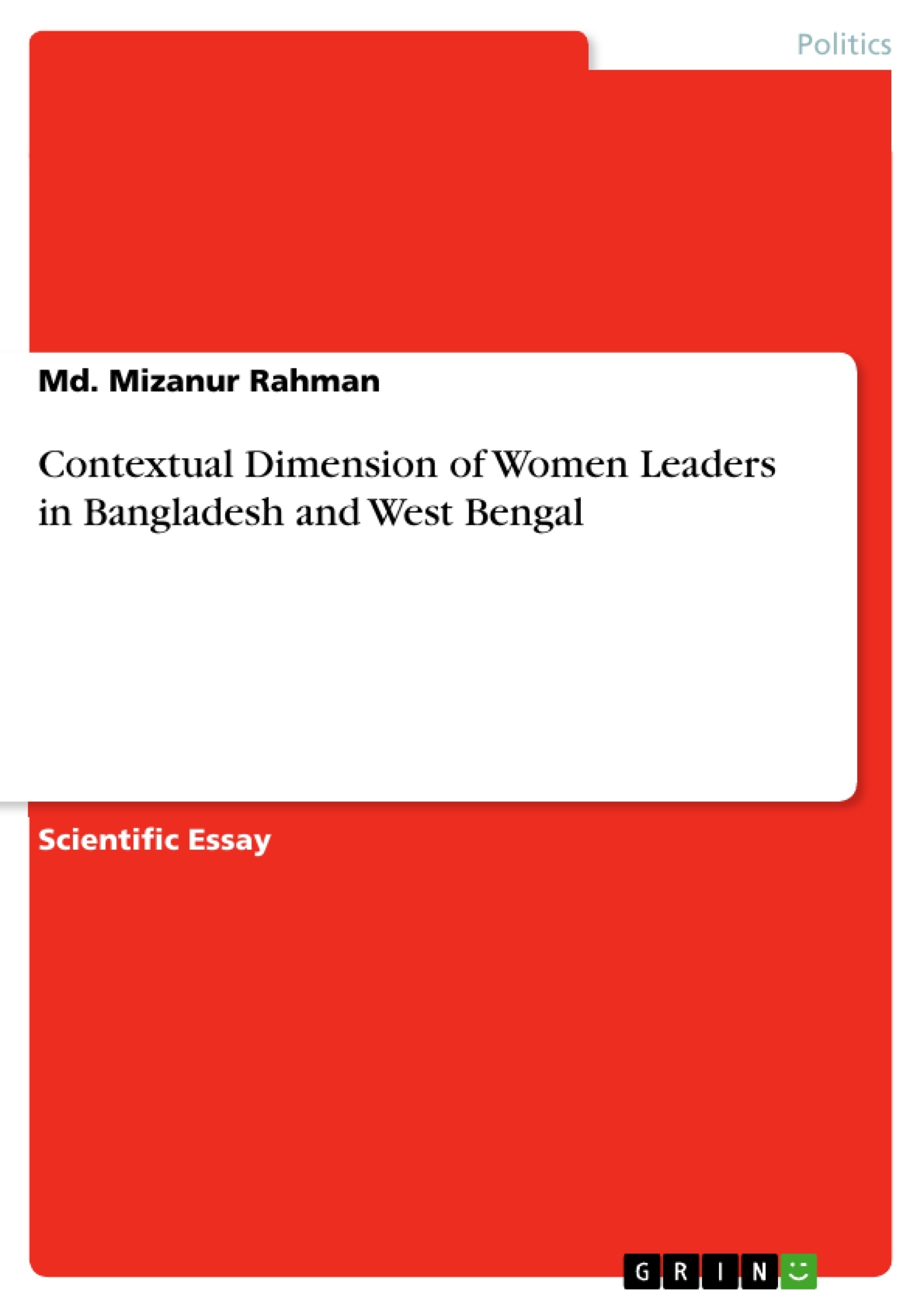It is an axiomatic fact that women leadership does not grow automatically rather it grows with the dynamic process of socio-cultural development of the country. Bangladesh and West Bengal, having a traditional socio-economic structure, do not have regular and systematic process of political participation of women, which is directly or indirectly linked to patriarchal values and kinship ties. Despite that in the recent days, numbers of women leaders at the grassroots level local government of both geographical areas have increased remarkably due to some change in the socio-cultural contexts and dimensions. Therefore, it deserves academic analysis and interpretation to delve into the dynamics and process of socio-cultural context that have contributed for the development of women leadership in both cases.
Inhaltsverzeichnis (Table of Contents)
- Introduction
- Objectives of the Study
- Methodology of the Study
- Scope of the Study
- The Rationale Behind Examining the Contextual Dimension of Women Leadership in Bangladesh and West Bengal, India
- Aspect of Women Leadership
- Contextual Dimension of Women Leadership in Bangladesh and West Bengal
- Contextual Dimension of Women Leadership in Bangladesh
- Contextual Dimension of Women Leadership in West Bengal
- Summary of the Contextual Dimensions of Women Leadership in Bangladesh West Bengal
- Bangladesh Part
- West Bengal Part
- Similarity and Dissimilarity in the Contextual Dimension of Women Leadership in Bangladesh and West Bengal
- Similarity in the Contextual Dimension of Women Leadership
- Dissimilarity in the Contextual Dimension of Women Leadership
- Unique Feature of Emergence of Women Leadership In Bangladesh and West Bengal
- Bangladesh Part
- West Bengal Part
- Some Suggestions for Women Leaders of both Bangladesh and West Bengal, India
Zielsetzung und Themenschwerpunkte (Objectives and Key Themes)
The study aims to explore the contextual factors that have contributed to the emergence of women leaders in local government in Bangladesh and West Bengal. The study specifically focuses on:- Identifying the social, political, economic, and legal factors that have influenced the rise of women leaders in local government in both countries.
- Analyzing the similarities and unique characteristics of women's leadership emergence in Bangladesh and West Bengal.
- Proposing policy recommendations to bolster the role of women leaders in local government in both regions.
- Examining the cultural and societal contexts, especially regarding patriarchal values, that have shaped women's participation in public life.
- Analyzing the influence of modernization and technological advancements on women's empowerment and their participation in public life.
Zusammenfassung der Kapitel (Chapter Summaries)
The introduction discusses the need for understanding the dynamics of women's leadership in Bangladesh and West Bengal, highlighting the importance of contextual analysis. The study's objectives are outlined, emphasizing the focus on examining the socio-cultural, economic, political, and legal aspects of women's leadership emergence. The methodology section describes the use of expert consultations and content analysis to collect data, while the scope of the study clarifies the focus on rural local governments and the historical period from the 1970s to 1990s. The rationale behind comparing Bangladesh and West Bengal is explained by highlighting the commonalities and differences in their historical, cultural, and socio-economic systems. The chapter on the aspect of women leadership discusses the broader context of women's participation in public life, emphasizing the role of socio-cultural factors. It explores the influence of patriarchal values, the changing cultural landscape, and the impact of technology and communication on women's empowerment. The contextual dimension of women leadership in Bangladesh is explored, analyzing the socio-cultural, economic, political, and legal factors that have shaped women's leadership in the region.Schlüsselwörter (Keywords)
The study focuses on women's leadership, rural local government, Bangladesh, West Bengal, socio-cultural context, economic factors, political participation, legal frameworks, patriarchal values, women's empowerment, technological advancements, and comparative analysis.- Quote paper
- Md. Mizanur Rahman (Author), 2013, Contextual Dimension of Women Leaders in Bangladesh and West Bengal, Munich, GRIN Verlag, https://www.grin.com/document/210420



